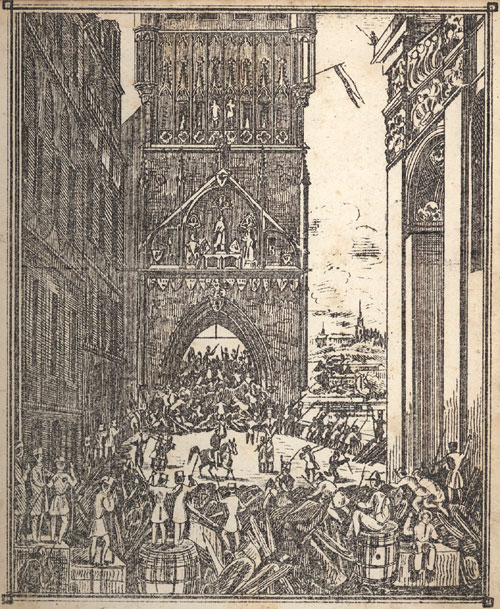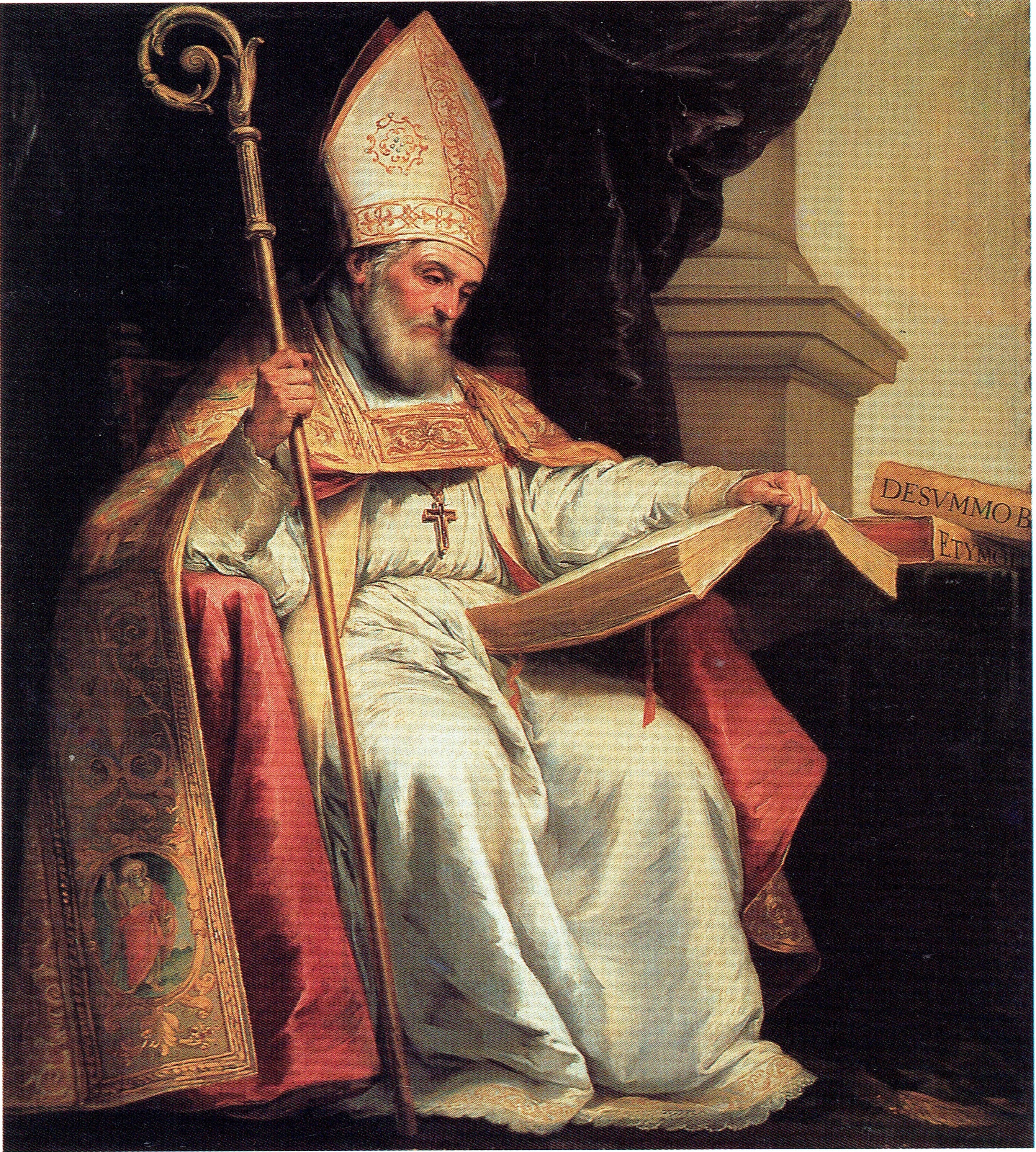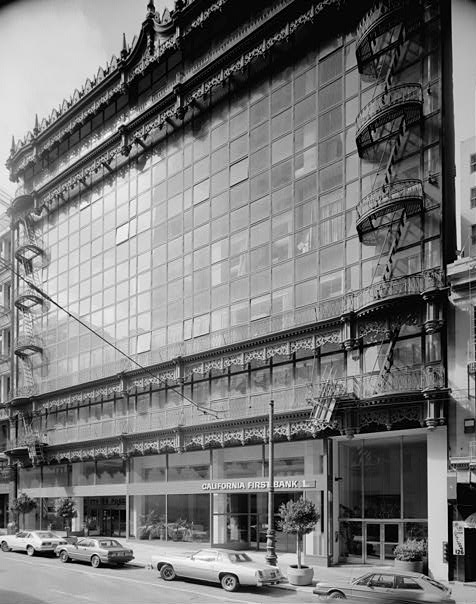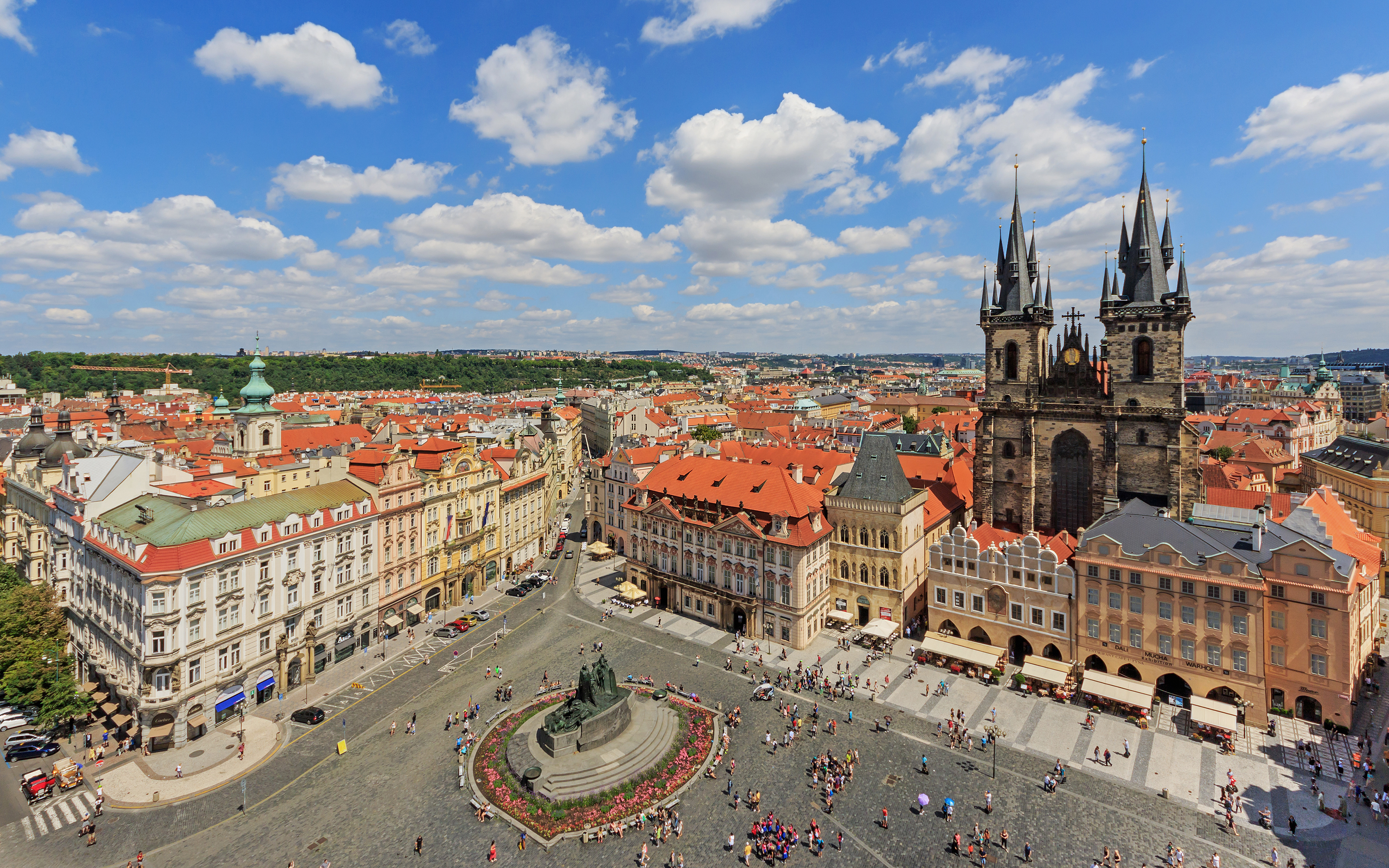|
Johann Georg Bendl
Johann-Georg Bendl (; before 1620 – 27 May 1680 in Prague), or Jan Jiří Bendl (), was a Bohemian Baroque sculptor, who worked mainly in Prague. He was the son of fellow sculptor Georg Bendl (–1656) and is considered the first important Bohemian Baroque sculptor. His sculptural style was imitated by many successors, and some of his statues can be seen at the National Gallery in the St. George Convent in the Prague Castle. Works The wooden pulpit (since destroyed) of the St. Wenceslas Church (Zderaz), St. Wenceslas Church (of the Augustinians, Augustinian Order) in Prague, was probably one of his earliest works. He also sculpted the pulpit in the church Kostel Panny Marie pod Řetězem in the Prague district Malá Strana. All the most important churches in Prague eventually would order one or more statues. In 1648 he sculpted the statues for side chapels in the Church of Our Lady in front of Týn, Church of Our Lady of Týn, the church on the main square of Prague. He decora ... [...More Info...] [...Related Items...] OR: [Wikipedia] [Google] [Baidu] |
Servite Order
The Servite Order, officially known as the Order of Servants of Mary (; abbreviation: OSM), is one of the five original mendicant orders in the Roman Catholic Church. It includes several branches of friars (priests and brothers), contemplative nuns, a congregation of religious sisters, and lay groups. The order's objectives are the sanctification of its members, the preaching of the Gospel, and the propagation of devotion to the Mother of God, with special reference to her sorrows. The Servites friars lead a community life in the tradition of the mendicant orders. History Foundation The order was founded in 1233 by "the seven holy founders", each a member of a patrician family of Florence, Italy. These cloth merchants left their city, families, and professions and withdrew to Monte Senario, a mountain outside the city of Florence, for a life of poverty and penance. The seven were: Bonfilius of Florence, born Bonfilius Monaldi (Buonfiglio dei Monaldi); Alexis of Florence, ... [...More Info...] [...Related Items...] OR: [Wikipedia] [Google] [Baidu] |
Ignaz Bendl
Ignaz(-Johann) Bendl (Czech: Ignác Bendl; ? – ) was a Bohemian painter, sculptor, medalist, and ivory engraver, who worked mainly in Vienna and Brno. There is almost nothing known about his life. According to Grove's ''Dictionary of Art'', he was born, perhaps as the son of Johann-Georg Bendl, in Pfarrkirchen. There are two towns called Pfarrkirchen in Upper Austria, therefore it is undecided which one it might have been. There is no date of birth. He died circa 1730, but again no mention where. Remaining works: * twelve ivory reliefs (only one signed by him) of classical gods and heroes (1684) * twelve relief medallions with sybils's heads. Both the reliefs and medallions are on display in the Kunsthistorisches Museum, Vienna. * the altarpiece ''Franz von Paula''; Paulanerkirche, Vienna * ivory medallion ''Triumphal arch designed for the coronation of emperor Joseph II''; Victoria and Albert Museum, London (1690) *He made the sculptural group of mythological figures ( Neptun ... [...More Info...] [...Related Items...] OR: [Wikipedia] [Google] [Baidu] |
Vyšehrad
Vyšehrad (German: ''Wyschehrad,'' ''Prager Hochburg'', English: "upper castle") is a historic fort in Prague, Czech Republic, just over 3 km southeast of Prague Castle, on the east bank of the Vltava River. It was probably built in the 10th century. Inside the fort are the Basilica of St. Peter and St. Paul, Prague, Basilica of St. Peter and St. Paul and the Vyšehrad Cemetery, containing the remains of many famous Czechs, such as Antonín Dvořák, Bedřich Smetana, Karel Čapek, and Alphonse Mucha. It also contains Prague's oldest Rotunda of St. Martin, from the 11th century. History Local legend holds that Vyšehrad was the location of the first settlement which later became Prague, though thus far this claim remains unsubstantiated. Legend has it that Duke Krok founded Vyšehrad while looking for a safer seat than in Budeč (gord), Budeč. On a steep rock above the Vltava river, he ordered a forest to be cut down and a castle built there. Also according to legend, K ... [...More Info...] [...Related Items...] OR: [Wikipedia] [Google] [Baidu] |
Wenceslas Square
Wenceslas Square (Czech language, Czech: , colloquially ''Václavák'' ; German language, German: ''Wenzelsplatz'') is one of the main city squares and the centre of the business and cultural communities in the New Town, Prague, New Town of Prague, Czech Republic. Many historical events occurred there, and it is a traditional setting for Demonstration (people), demonstrations, celebrations, and other public gatherings. It is also the place with the busiest pedestrian traffic in the whole country. The square is named after Wenceslas I, Duke of Bohemia, Saint Wenceslas, the patron saint of Bohemia. It is part of the historic centre of Prague, a World Heritage Site. Formerly known as Koňský trh (''Horse Market''), for its periodic accommodation of horse markets during the Middle Ages, it was renamed Svatováclavské náměstí (English: ''Saint Wenceslas square'') in 1848 on the proposal of Karel Havlíček Borovský. Features Less a city square, square than a boulevard, ... [...More Info...] [...Related Items...] OR: [Wikipedia] [Google] [Baidu] |
Charles Bridge
Charles Bridge ( , ) is a medieval stone arch bridge that crosses the Vltava river in Prague, Czech Republic. Its construction started in 1357 under the auspices of King Charles IV, and finished in the early 15th century.; The bridge replaced the old Judith Bridge built 1158–1172 that had been severely damaged by a flood in 1342. This new bridge was originally called Stone Bridge (''Kamenný most'') or Prague Bridge (''Pražský most''), but has been referred to as "Charles Bridge" since 1870. As the only means of crossing the river Vltava until 1841, Charles Bridge was the most important connection between Prague Castle and the city's Old Town and adjacent areas. This land connection made Prague important as a trade route between Eastern and Western Europe. The bridge is located on the historic coronation route of the Bohemian kings. The bridge is long and nearly wide. Following the example of the Stone Bridge in Regensburg, it was built as a bow bridge with 16 arches ... [...More Info...] [...Related Items...] OR: [Wikipedia] [Google] [Baidu] |
Vratislaus I Of Bohemia
Vratislaus (or Wratislaus) I (; – 13 February 921), a member of the Přemyslid dynasty, was Duke of Bohemia from 915 until his death in 921. Life He was a son of Duke Bořivoj I of Bohemia by his wife Ludmila and the younger brother of Duke Spytihněv I. Around 906, he married Drahomíra, a Hevellian princess, to establish close ties with the Polabian Slavs. Vratislaus had at least two sons, Wenceslaus and Boleslaus, both of whom succeeded him as Bohemian dukes. Some historians believe that Střezislava, the wife of the Bohemian nobleman Slavník, founder of the Slavník dynasty, was also the daughter of Vratislaus. Upon the death of his elder brother Spytihněv in 915, Vratislaus became duke at a time when the Bohemian lands around Prague Castle had already distanced themselves from the political and cultural sphere of Great Moravia and fallen under the influence of East Francia, especially during the rule of Duke Arnulf of Bavaria. The contemporary ''Annales Fulden ... [...More Info...] [...Related Items...] OR: [Wikipedia] [Google] [Baidu] |
Wenceslaus I, Duke Of Bohemia
Wenceslaus I ( ; 907 – 28 September 935), Wenceslas I or ''Václav the Good'' was the Prince (''Knyaz, kníže'') of Duchy of Bohemia, Bohemia from 921 until his death, probably in 935. According to the legend, he was assassinated by his younger brother, Boleslaus I, Duke of Bohemia, Boleslaus the Cruel. His martyrdom and the popularity of several biographies gave rise to a reputation for heroic virtue that resulted in his sainthood. He was posthumously declared to be a king and patron saint of the Czech Republic, Czech state. He is the subject of the well-known "Good King Wenceslas", a carol for Saint Stephen's Day. Biography Wenceslaus was the son of Vratislaus I, Duke of Bohemia from the Přemyslid dynasty. His grandfather, Bořivoj I of Bohemia, and grandmother, Ludmila, had been converted by Cyril and Methodius to Eastern Orthodox Church, Byzantine Christianity in a still unified Christendom, before the East–West Schism, Great Schism. His mother, Drahomíra, was the d ... [...More Info...] [...Related Items...] OR: [Wikipedia] [Google] [Baidu] |
Dominikanerkirche (Vienna)
The Dominican Church (), also known as the Church of St. Maria Rotunda, is an early Baroque parish church and minor basilica in the historic center of Vienna, Austria. It is the third church built on the same site in the course of time. History The first church on this site was built in 1237 by the newly arrived Dominicans on a parcel of land allotted in 1225-1226 by the duke Leopold VI. The church was enlarged between 1240–1270 and a new choir was added in 1273. A series of fires caused the construction of a new Gothic church between 1283 and 1302. The nave was extended between 1458 and 1474. This church consisted of a nave with five cross vaults, and two aisles. This church was heavily damaged during the first siege of Vienna by the Turkish army in 1529. The choir was demolished and the nave was partly taken down. The building became more and more dilapidated during the next period. The new-found self-awareness of the Counter-Reformation didn’t allow any more such a ... [...More Info...] [...Related Items...] OR: [Wikipedia] [Google] [Baidu] |
Doctors Of The Church
Doctor of the Church (Latin: ''doctor'' "teacher"), also referred to as Doctor of the Universal Church (Latin: ''Doctor Ecclesiae Universalis''), is a title given by the Catholic Church to saints recognized as having made a significant contribution to theology or doctrine through their research, study, or writing. , the Catholic Church has named 37 Doctors of the Church. Of these, the 18 who died before the Great Schism of 1054 are also held in high esteem by the Eastern Orthodox Church, although it does not use the formal title ''Doctor of the Church''. Among the 37 recognised Doctors, 28 are from the West and nine from the East; four are women and thirty-three are men; one is an abbess, three are nuns, and one is a tertiary associated with a religious order; two are popes, 19 are bishops, twelve are priests, and one is a deacon; and 27 are from Europe, three are from Africa, and seven are from Asia. More Doctors (twelve) lived in the fourth century than any other; eminent Chr ... [...More Info...] [...Related Items...] OR: [Wikipedia] [Google] [Baidu] |
1918 In Architecture
The year 1918 in architecture involved some significant architectural events and new buildings. Events * November 3 – A Baroque Marian column (built 1650) in Prague, the Czech Republic, is destroyed by nationalists. * December 3 – The November Group (''Novembergruppe'') of expressionist artists and architects is formed in Germany, and shortly afterwards merges with the Arbeitsrat für Kunst. Buildings and structures Buildings * Hallidie Building is built in San Francisco. Designed by Willis Polk. Credited as the first glass curtain wall building. * D. L. James House is built in Carmel Highlands, California. Designed by Greene and Greene in an Arts and Crafts style. * Copenhagen Police Headquarters are begun in Denmark. Designed by Hack Kampmann in a Neoclassical style. * Our Lady of the Victories Basilica in Melbourne, Australia is completed. * Newman College in Melbourne, Australia designed by Walter Burley Griffin, is completed. * The Chapel of St. James, of ... [...More Info...] [...Related Items...] OR: [Wikipedia] [Google] [Baidu] |
Old Town Square (Prague)
Old Town Square ( or colloquially , ) is a historic square in the Old Town quarter of Prague, the capital of the Czech Republic. It is located between Wenceslas Square and Charles Bridge. Buildings The square features buildings belonging to various architectural styles, including the Gothic Church of Our Lady before Týn, which has been the main church of this part of the city since the 14th century. Its characteristic towers are 80 m high. The Baroque St. Nicholas Church is another church located in the square. Prague Orloj is a medieval astronomical clock mounted on the Old Town Hall. The clock was first installed in 1410, making it the third-oldest astronomical clock in the world and the oldest one still in operation. The tower of the Old Town Hall is open to the public and offers panoramic views of the Old Town. An art museum of the Czech National Gallery is located in the Kinský Palace. Statues and memorials The square's centre is home to a statue of religio ... [...More Info...] [...Related Items...] OR: [Wikipedia] [Google] [Baidu] |






